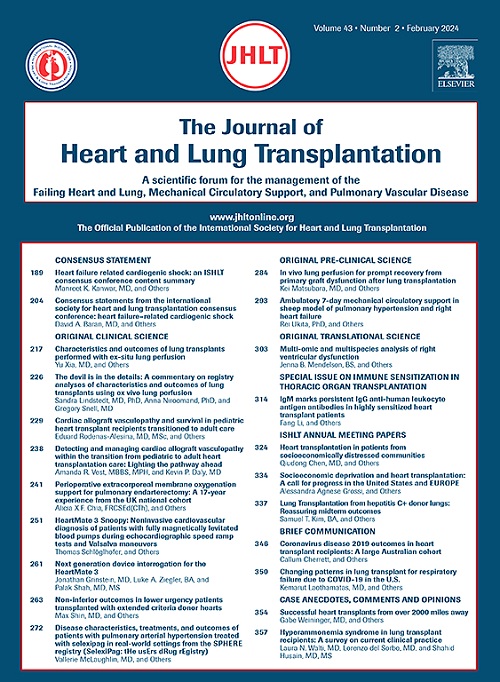透视:血液信息设计是否预示着第四代心脏辅助设备的诞生?
IF 6.4
1区 医学
Q1 CARDIAC & CARDIOVASCULAR SYSTEMS
引用次数: 0
摘要
机械循环支持装置极大地改变了严重心胸疾病的治疗方法。虽然心脏移植是治疗终末期心脏病的金标准疗法,但对于那些不符合条件和/或等待器官供应的患者来说,长期机械支持装置是一种可行的替代方法。在前五十年的发展过程中取得了重大的技术进步,从而提高了耐用性和存活率,减少了不良反应。然而,近来由于各种并发症(如内出血、多系统器官衰竭)的出现,所取得的成果有所减弱,而这些并发症在残疾和/或死亡率中所占的比例相当大。此外,鉴于成熟的心室辅助设备在临床试验中甚至在临床批准后都出现了失败(一级撤消),现在是考虑以下问题的时候了:我们的临床前评估方案对机械循环支持设备的设计和开发至关重要,是否能为未来的临床表现提供真实可靠的概况?本评论探讨了这一问题,并从机械循环支持技术临床前评估所涉及的各学科角度分析了开发途径:讨论了台式血液测试、计算设计和模拟以及动物试验方法的局限性,认为这些局限性可能是造成一些常见血液相容性相关不良事件的原因。虽然我们承认有些缺陷是实用性的,但我们也提出了可能的解决方案,只有通过真正跨学科和开放的方法,挑战当前医疗设备开发的本质,才能实现这些解决方案。我们认为,要减少与血液相容性相关的不良事件,可以而且必须克服这些问题,并有可能成为第四代心脏辅助设备的标志。本文章由计算机程序翻译,如有差异,请以英文原文为准。
Will blood-informed design signal the fourth generation of cardiac assist devices?
Mechanical circulatory support devices have profoundly transformed the management of severe cardiothoracic disorders. While heart transplantation is the gold standard therapy for end-stage heart disease, long-term mechanical support devices are a viable alternative for those ineligible and/or those awaiting organ availability. Major technological advancements were made over first 5 decades of development, resulting in improved durability and survival with reduced adverse events. However, gains have tapered recently for various complications (e.g., internal bleeding, multisystem organ failure), which collectively represent a significant proportion of disability and/or mortality. Further, in light of mature ventricular assist devices failing during clinical trials or even after clinical approval (class I withdrawals), it is timely to consider: Are our preclinical assessment protocols vital in the design and development of mechanical circulatory support devices, providing a realistic and reliable profile of future clinical performance? This commentary explores this question and analyses development pathways through the lens of the various disciplines involved in the preclinical assessment of mechanical circulatory support technologies: Limitations in approaches to benchtop blood testing, computational design and simulation, and animal testing are discussed as likely contributors to some of the common hemocompatibility-related adverse events (HRAEs). While it is acknowledged that some shortcomings are pragmatic in nature, possible solutions are presented that will only be realized through truly transdisciplinary and open approaches that challenge the current nature of medical device development. We suggest that these can and must be overcome to diminish HRAEs and will potentially demarcate the fourth generation of cardiac assist devices.
求助全文
通过发布文献求助,成功后即可免费获取论文全文。
去求助
来源期刊
CiteScore
10.10
自引率
6.70%
发文量
1667
审稿时长
69 days
期刊介绍:
The Journal of Heart and Lung Transplantation, the official publication of the International Society for Heart and Lung Transplantation, brings readers essential scholarly and timely information in the field of cardio-pulmonary transplantation, mechanical and biological support of the failing heart, advanced lung disease (including pulmonary vascular disease) and cell replacement therapy. Importantly, the journal also serves as a medium of communication of pre-clinical sciences in all these rapidly expanding areas.

 求助内容:
求助内容: 应助结果提醒方式:
应助结果提醒方式:


